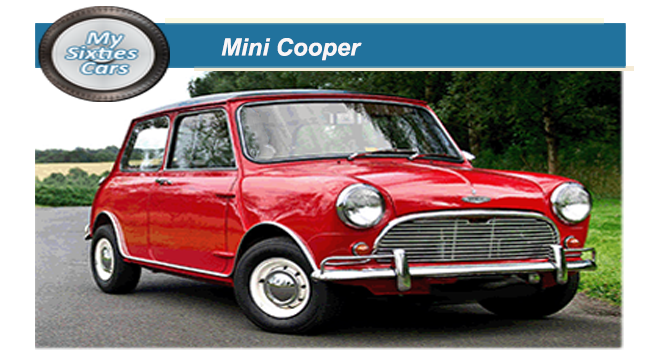
One of the most unprovable myths surrounding the UK car industry of the Sixties was that the development of the Mini Cooper derived from a long-running friendship between BMC's talented in-house designer Alec Issigonis and John Cooper, owner and founder of the Cooper Car Company,producers and designers of Formula One racing cars.
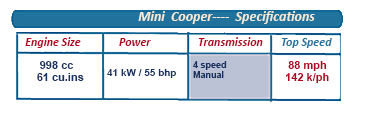 Cooper was a firm believer that there was a slot in the market for a spiced-up Mini that could take part in track competitions.
Cooper was a firm believer that there was a slot in the market for a spiced-up Mini that could take part in track competitions.
Originally Issigonis was reported to be apprehensive about the concept, but Cooper was resolute in his beliefs and eventually persuaded Issigonis to sell the idea to the BMC board.
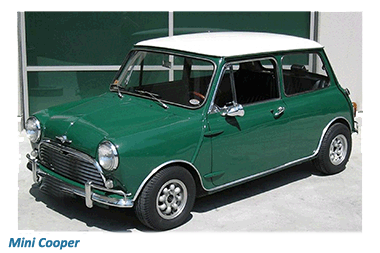 It didn’t take too long for the powers that be at BMC to give the green light to go ahead with the project- to produce what the pair described as the first "red-blooded” Mini.
It didn’t take too long for the powers that be at BMC to give the green light to go ahead with the project- to produce what the pair described as the first "red-blooded” Mini.
Thus, the first Mini Cooper exploded on the scene in 1963 at the height of the car's popularity. Initially participating in the Group 2 Rally racing Issigonis and Cooper's new project was the subject of immediate acclaim.
The first higher-performance Mini, the 997cc engine Cooper, followed in the autumn of 1961, with two SU HS2 inclined carburettors power was raised to 55 bhp at 6,000 rpm. An up-rated close-ratio gearbox was fitted, and Lockheed 7-inch diameter front disc brakes overcame an inherent weakness of the standard vehicles. ![]()
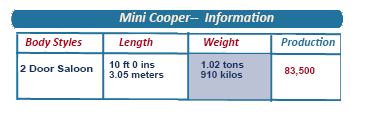 Externally the “Cooper” resembled the new Super models apart from a Cooper badge and eleven horizontal grille bars. Often described as the "pocket rocket," the Mini Cooper soon established a following of its own being the most charismatic and desirable spin-off from the Mini brand.
Externally the “Cooper” resembled the new Super models apart from a Cooper badge and eleven horizontal grille bars. Often described as the "pocket rocket," the Mini Cooper soon established a following of its own being the most charismatic and desirable spin-off from the Mini brand.
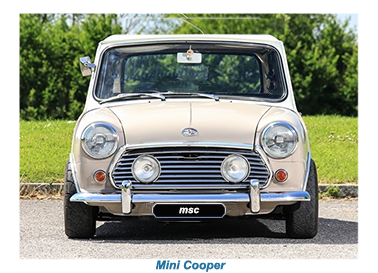 The Mini Cooper S, the most specialised of the Mini series, was released in 1963, ostensibly to boost the motorsport potential of the car,
The Mini Cooper S, the most specialised of the Mini series, was released in 1963, ostensibly to boost the motorsport potential of the car,
Using technology first blooded in Formula Junior racing, the Cooper S
Soon displayed its tremendous capabilities on the track, as well as on the open road, thanks to its 1275cc engine which was higher-revving and more robust.
Compared with the Mini-Cooper, the Cooper S had larger front disc brakes, radial ply tires as standard and, from late 1965, wider 4.5in wheel rims.
As the years went by, more and more optional extras were made available.
As with the Mini-Cooper, there were Austin and Morris versions which seemed to sell equally well.
 The Mini Cooper and the Cooper S soon became a well-known figure in the racetracks of the UK.
The Mini Cooper and the Cooper S soon became a well-known figure in the racetracks of the UK.
In January 1964 the Mini Cooper sprung to greater fame when Irishmen Paddy Hopkirk took first place in the exceptionally testing Monte Carlo Rally, leaving a host of larger and more powerful cars in his wake.
![]()
Thanks to that victory and a few others that followed the Austin Mini Cooper became a legend.
A legend that was hammered home when a Mini Cooper to in first place in the rally the following year, reaching a peak in 1966 when the Cooper S took not only took first but also second and third place in the rally.
I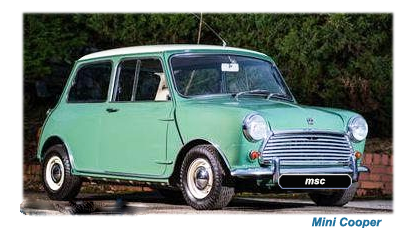 n late 1967, the Cooper became Mk II, picking up the same body changes applied to the standard Mini Mk II.
n late 1967, the Cooper became Mk II, picking up the same body changes applied to the standard Mini Mk II.
The Mark II was the last of the Mini-Coopers, with no equivalent available when the two versions of the " Mini “were merged into one in 1969.
The Mini Cooper remained in production until 1971, receiving very few updates during its ten-year production run.





